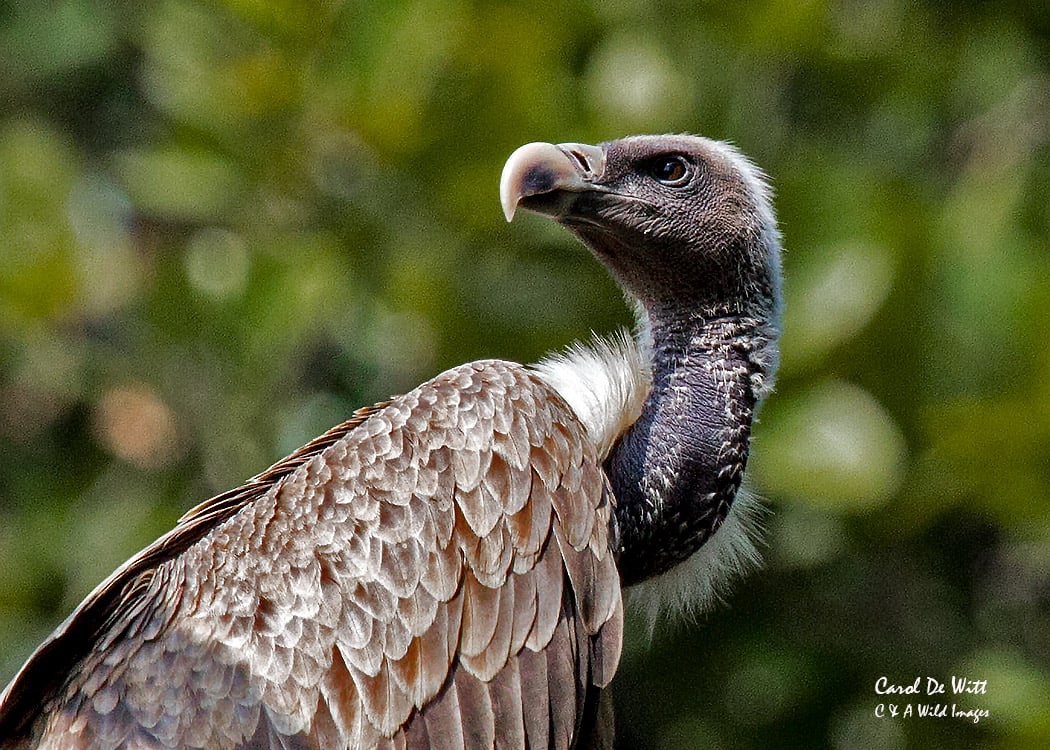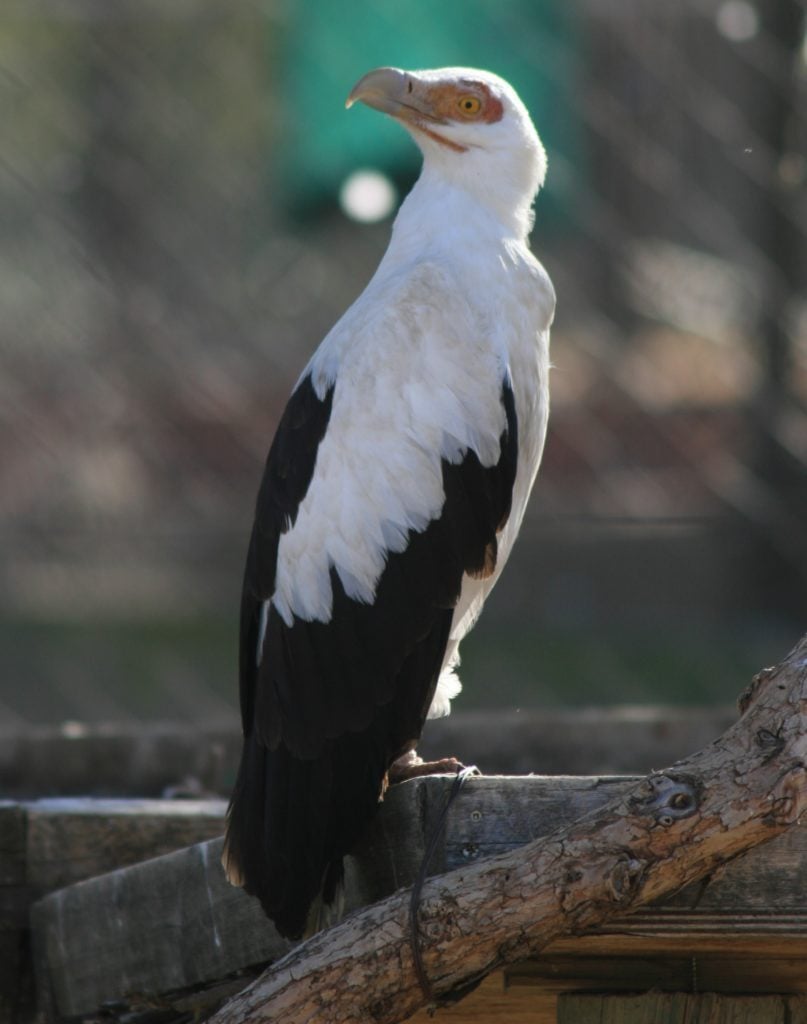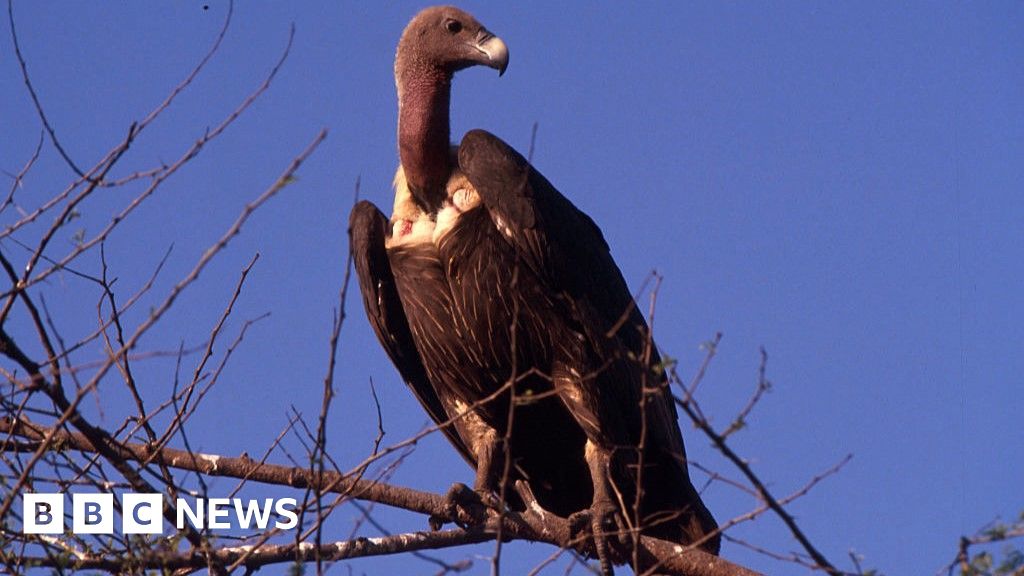BBC: How decline of Indian vultures led to 500,000 human deaths 25 JUL 2024
More than two decades ago, India’s vultures began dying because of a drug used to treat sick cows.
By the mid-1990s, the 50 million-strong vulture population had plummeted to near zero because of diclofenac, a cheap non-steroidal painkiller for cattle that is fatal to vultures. Birds that fed on carcasses of livestock treated with the drug suffered from kidney failure and died.
The unintentional decimation of these heavy, scavenging birds allowed deadly bacteria and infections to proliferate, leading to the deaths of about half a million people over five years, says the study published in the American Economic Association journal.
“Vultures are considered nature’s sanitation service because of the important role they play in removing dead animals that contain bacteria and pathogens from our environment - without them, disease can spread,” says the study’s co-author, Eyal Frank, an assistant professor at University of Chicago’s Harris School of Public Policy.
“Understanding the role vultures play in human health underscores the importance of protecting wildlife, and not just the cute and cuddly. They all have a job to do in our ecosystems that impacts our lives.”
The authors estimated that between 2000 and 2005, the loss of vultures caused around 100,000 additional human deaths annually, resulting in more than $69bn (£53bn) per year in mortality damages or the economic costs associated with premature deaths.
These deaths were due to the spread of disease and bacteria that vultures would have otherwise removed from the environment.
“The vulture collapse in India provides a particularly stark example of the type of hard-to-reverse and unpredictable costs to humans that can come from the loss of a species,” says Mr Sudarshan, an associate professor at the University of Warwick and co-author of the study.
It is amazing to see what a difference these birds most take for granted contribute to our success as a species.
Many find vultures to be creepy, but after learning about some of their amazing abilities and understanding why they’ve evolved to become what they are, they are superbly designed animals that excel at doing a very important job.
White-rumped vulture (Population loss since 2000: 98%)

Indian vulture (Population loss since 2000: 95%)

Red-headed vulture (Population loss since 2000: 91%)

Vultures and other carrion birds have been used by some cultures to eat human remains too. The bones are then interred, cremated or venerated. It’s called sky burial. I always liked the idea. Giving back to nature.
https://en.wikipedia.org/wiki/Disposal_of_human_corpses#Sky_burial
(For some reason, the article just about sky burial mostly only talks about the Tibetan and Mongolian practice.)
Maybe someone can look for it since I’m being lazy, but I coulda sworn I saw a piece around a decade ago about how sky burials were falling out of fashion in India/Nepal and it was impacting the vulture populations that partially depended on dead humans as a food source. Now I’m wondering if the issue was sky burials in decline or if it was poison in cattle – or both.
Here’s a good one from Al Jazeera.
7 Apr 2015
The massive decline in the vulture population across Mumbai and the entire Maharashtra state began from 1992-93 onwards when the Indian government opened this drug for use in livestock as well. Today, there is not a single vulture in the state, according to Rahmani.
“Diclofenac is lethal to vultures. It does not matter from where they get it, from a dead Parsi or from a dead cow,” Rahmani said.
As corpses take longer, sometimes eight weeks, to decompose fully, the tower of silence continues to be a scene of partially decomposed bodies.
This has pushed some of the Parsi elders to blend the ritual of “sky burials” with modern technology.
“For 800 deaths a year, we need at least 250 vultures. But since there are no vultures around, we’ve installed solar concentrators. I think that’s the only way out now,” Dinshaw Rusi Mehta, a member the Bombay Parsi Punchayet, told Al Jazeera.
Thank you!
Of course! That’s another good article, so I appreciate you pointing it out.
It really highlights how this isn’t something we just learned about, it’s something we knew about all along but people ignored it because it was inconvenient to do something about it.
People in the future are really going to reflect pretty negatively of us from the 1900s.
Would be cool, but my body probably has a ton of shit that could kill the vultures just as the cows did.
I’m glad you guys still make me laugh even when I have to post depressing things! 😅
There was a 99pi episode on this somewhat recently. https://99percentinvisible.org/episode/towers-of-silence/
Thanks for sharing this!
At first it was a lot of what was in this article and the one from Al Jazeera I shared in the other comment, but then it went on to describe the effect it’s having on the Parsis and how the loss of the vultures is ending their religion due to them losing their land due to complaints from the vultures not being able to process the bodies.
It also ended with a note on how now there are adults now that have gone their whole lives without ever seeing a vulture. They hear their parents and grandparents talk about them in relation to their religion, but to the kids they are just another mythic beast like a leviathan, as they’ve never seen one. That’s kind of mind blowing to me, and it’s sad to think how many other animals our grandchildren might not remember in the future.
Radiolab had a good episode on this and figuring out what was killing the vultures:
deleted by creator
Vultures are not typically aggressive. They don’t have the speed and strong talons of other raptors. The great majority of their food is already dead when they eat it. If another predator shows up, they will usually get out of there.
Their look is unconventional, but they are largely designed the only way they can be. If we go by the philosophy of beauty being function over form, it becomes easier to appreciate them.
Their heads are typically bald to avoid parasites and pathogens they would get from sticking their heads inside of some gnarly spaces.
Their legs are also bare, and they wash them with their urea (urohydrosis) to keep them sterile as well, because those feet are also going in the same funk.
Vulture stomach acid also comes in between 0-1 pH, making it 100x as strong as ours. All that bacteria and any parasites are going to be nuked.
So they are basically living, regenerating bio hazard suits that can digest anything. They can eat things contaminated with anthrax and botulism without a care in the world.
Bonus fact: There is a Palm Nut Vulture eats nuts, fruit, and grain in addition to meat.

Bearded vultures are pretty neat too. They pretty much only eat bones. They can eat surprisingly big chunks whole. Or if the bone is too big, they drop it onto a rock to break it up.
And they’re very peaceful, because they know no one is going to fight them for the bones.
Hehe bones away!
That’s crazy they prefer the bones. It seems like that would have much less nutrition.
No competition does seem like a big advantage though.
That’s what I thought too, but bones are about 1/3 protein with a lot of fat and minerals. Kind of like tonkotsu broth.
They also store well. If the vultures find more than they need, they’ll keep the extra bones in a storage place really high up. The fat content drops a lot when the bones dry out, but the protein is still there.
The downside is bones don’t have a lot of water, so bearded vultures need a source of fresh water in their territory.
Very interesting!
In return, here is one of my comments from a while back about how birds can generate some of their own water!
So this got me to do a quick read on owl drinking…
Owls don’t typically drink, though they can if they want to or need to due to excessive heat or lack of food.
Their water requirements are typically achieved just through eating. While eating their food whole does capture a decent amount of water, metabolism releases hydrogen atoms that combine with oxygen in the body to produce what is called “metabolic water.”
While mammals usually only generate enough metabolic water to flush out our urea, making our urine, birds are much more efficient at producing metabolic water, and they also don’t urinate, they release the uric acid directly. That is the white part of a bird poo. Both of these factors allow birds to generate their own water supply sufficient to sustain them under normal circumstances.
Fascinating! So oxygen from the air (or wherever) + hydrogen from food = water.
Plants can make their own food, and birds can make their own water :)
Yes, every time we go pee, it’s a miracle of metabolism! 😜
They probably had to compete with other scavengers for the dead animals and evolved to live of the leftover bones.
Why the heck was cattle pain killer used so widely? What are they doing to the cows?!
This article has the best account of why its use was/is so widespread. Here are some select lines from the article:
The introduction of hybrid cows in India coincided with global trends of the chemicalization of agriculture, medicine, and veterinary science.
In the shadow of antibiotics, diclofenac, a common painkiller also for human use, has become a “blockbuster drug” in more-than-human medicine. High-yielding cows undergo relentless cycles of pregnancy by artificial insemination, birth, and lactation. In India, diclofenac was the drug of choice to treat the many pains of high-performance cows, among them mastitis, a painful inflammation of the udder.
Diclofenac is a cheap, nonsteroidal anti-inflammatory drug (NSAID) and thus within the same class of pharmaceuticals as aspirin (ASS) or ibuprofen.
Diclofenac has been sold since 1973 under the brand name Voltaren as an over-the-counter remedy for arthritis pain in humans and domestic animals. With the end of patent protection, it has become one of the most widely used NSAIDs across the world, and its generics are available in India under a variety of brands.
Human and other mammalian bodies metabolize diclofenac and excrete it via the kidneys and the renal system. Healthy mammalian kidneys can deal with the drug reasonably well. To birds, however, diclofenac is a deadly toxin. Birds who ingest diclofenac die of severe renal failure as the effect of kidney necrosis.
Based on emerging evidence of avian kidney toxicity, scientific and political pressure led to the eventual ban of diclofenac for veterinary use in India in 2006. However, many veterinarians consider diclofenac so important for the care of milk cows that they continue to use the drug illegally by misappropriating drugs designated for human use only. Pharmaceutical companies played along by labeling the liquid 30 ml vials, popular among veterinarians injecting the drug, as multi-dosage preparations for human usage
Ok, well that’s fucking horrible
The ignoring the science part for sure is bad, especially by the manufacturers. But they have probably also saved many human lives by providing more and cheaper food, which was the point of the hybridization in the article.
There seem to be better all around alternatives now, though maybe not as cheap or well known yet.
Hopefully they will continue to replace this old drug and the vultures may someday bounce back.
Science is wonderful, but when we use it for greed, it can become quite terrible as well.
And yet cows are supposed to be sacred to Hindus?
I don’t know very much on Hinduism or India in general honestly, but much like with the US, Europe, or wherever we are, we dont need to look far to find a combination of rich people or wannabe rich people ignoring religion for profit and also poor people forced to compromise beliefs to earn a living.
I do recall recent protests by farmers there due to really damaging farm bills, so I dont think the actual farmers there rank high socially or politically.
It’s important to remember the vast majority of people anywhere are decent, they are just getting screwed by that small percentage that doesn’t care. I’m sure most of us work for some less than ideal employer, but we don’t always need to get judged by that, we’re just trying to make a buck too. There’s about a million things I’d rather be before Indian dairy farmer comes up, so I’m not going to judge them here. It seems like a hard, hot, nasty job, with little economic benefit to most people involved.
Those pharma people though, and any big ag operation still skirting the rules once the science was out, drag them through the mud all you want though.






